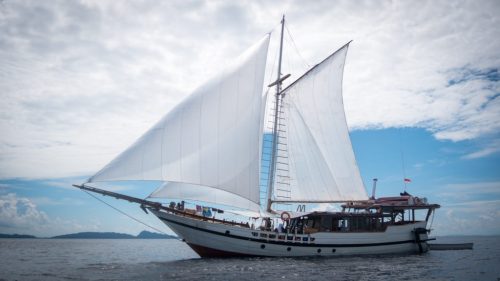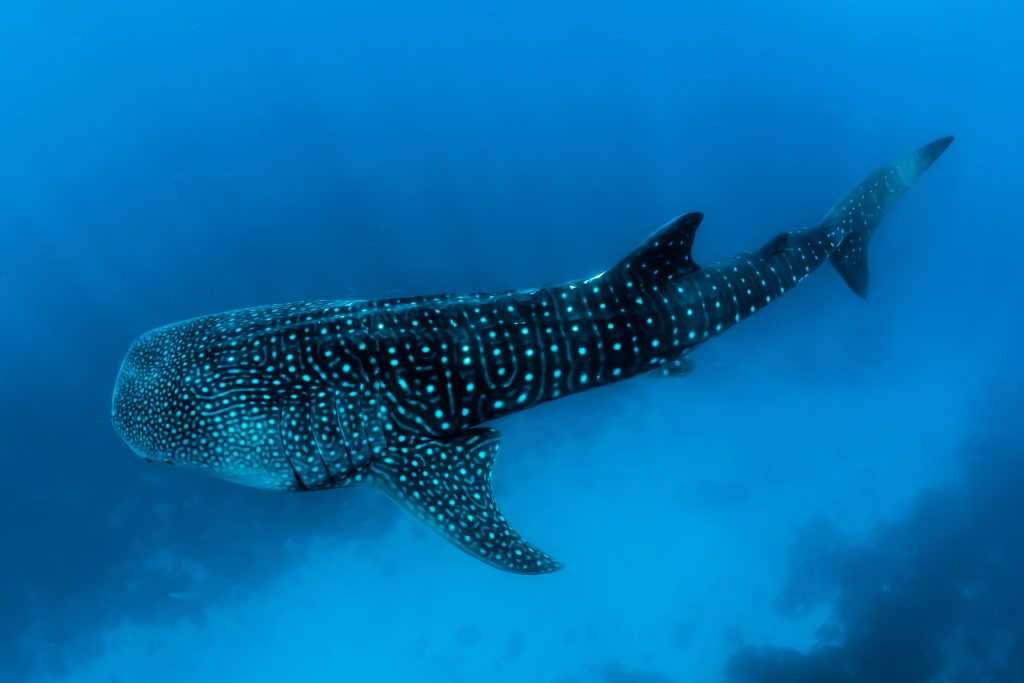Some shark tourist experiences are controversial, but there are methods to keep these magnificent aquatic animals safe. Travelers have numerous opportunities to witness these species, whether diving, snorkeling, or swimming beside them. Before booking your own shark trip, learn about the ethics of shark encounters, the debate over shark baiting and cage diving. Indonesia is one of the countries that has a remarkable diversity of small and large marine biota. If you are planning a Komodo diving trip, it is possible to get the experience of swimming with sharks.

Komodo Diving – Sharks
It is a fact, sharks have been around for hundreds of years. Despite the fearsome reputation, humans are more likely to kill sharks than the other way around. The number of sharks is dropping considerably because of shark fin soup. Sharks grow relatively slowly and take years to grow. Even some species of sharks are on the verge of extinction and can be an ecological disaster. Sharks are predators capable of keeping the ocean healthy.
Types of sharks you can find on Komodo island
White tip reef shark (Max size: 1.6m)
Every other year, the viviparous gestation period of 10-13 months for 1 to 6 live pups.
The “white tips,” one of the most abundant sharks found on Indo-Pacific reefs, are best seen in the Park near Gili Lawa Laut. At Castle Rock, Tengah, and Siaba Besar, babies can generally be seen hidden beneath table corals. Fun fact: they are one of the few shark species capable of pumping water over their gills while remaining motionless on the ocean floor.
Black tip reef shark (Max size: 1.6m)
This fearful shark is difficult to approach, although it may be found all across the National Park. Karang Makassar, The Passage, and Tengah are some of the greatest places in Komodo to see black tip reef sharks.
Grey reef shark (Max size: 1.9m)
The largest sharks were typically seen in Komodo patrol the diving sites of Castle Rock and Crystal Rock, but they’ve also been spotted in a few other spots.
Whale shark (Max size: 12.65m)

The whale shark is regarded as a gentle giant and fairly accessible when on the surface due to its strict plankton diet, which makes it harmless to people. They are classified as endangered because they do not attain maturity until they are 30 years old. By sharing images or videos of encounters to the Wildbook, anyone with a camera may help save whale sharks. Although seeing a whale shark in the Komodo diving site is a rare occurrence. The Aliikai has teamed with scientists on a few unique tours each year to swim and dive with these incredible creatures.
Komodo diving meet the Megamouth shark
The Komodo National Park diving site is full of surprises, and unexpected sightings are often. There have been numerous arguments about which shark species was that silhouette in the distance. There have also been reports of hammerhead sharks passing by, a young tiger shark eating a dead whale at the surface, and a megamouth shark observed in 2017 at a popular diving site in Komodo’s northwestern region.
How to choose trustable and responsible scuba diving Komodo operator?

While diving with a PADI-certified dive operator ensures that you will be guided by a qualified diver, it does not guarantee that they will follow safe diving techniques. Responsible shark encounters begin with education. Divers and swimmers can ask operators if they follow the guide’s suggestions, even if it isn’t an official accreditation. If a company promotes shark dives but doesn’t provide any information about the creatures or conservation efforts, it’s probably not a responsible company
Read also
West Papua Tour, Discover Amazing Raja Ampat
Komodo Liveaboard for Honeymoon
Papua Trip on a Budget